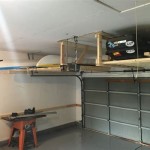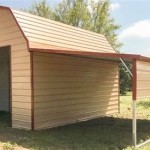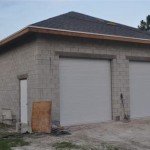How to Repair an Automatic Garage Door Opener
Automatic garage door openers are a modern convenience that adds safety and security to your home. However, like any mechanical device, they can malfunction over time. Fortunately, many common issues can be resolved with a few basic tools and some troubleshooting. This article will guide you through the process of identifying and repairing some of the most frequent problems with automatic garage door openers.
1. Check the Power Source
The first step in troubleshooting a malfunctioning garage door opener is to ensure the power source is functioning correctly. A simple way to check is to look at the light on the opener's control panel. If the light is illuminated, then power is reaching the unit. However, if the light is off, it could indicate a problem with the electrical outlet, a blown fuse, or a tripped circuit breaker.
To diagnose further:
- Check the outlet: Make sure the outlet is plugged in securely and that power is reaching the outlet itself by plugging in a different appliance.
- Examine the fuse box: If the outlet has power, check your fuse box for a blown fuse related to the garage door opener.
- Check the circuit breaker: If the fuse is intact, examine the circuit breaker box to see if the circuit breaker that controls the garage door opener has tripped. If it has, simply reset the breaker.
If the power source is confirmed to be functioning correctly, you can move on to the next step in your troubleshooting process.
2. Inspect the Garage Door Opener's Components
Once you've ruled out power issues, it's time to inspect the components of the garage door opener itself. This includes the motor, the chain or belt drive, the sensors, and the control panel. Start by visually inspecting the components for any visible damage or wear and tear.
Here's a checklist for inspecting the components:
- Motor: Listen for any unusual noises, such as grinding or rattling, which could indicate a motor problem.
- Chain or belt drive: Examine the chain or belt for any signs of wear, looseness, or damage.
- Sensors: Ensure the sensors are clean and aligned correctly. Check for obstructions or damage to the sensors, as they play a crucial role in safety.
- Control panel: Inspect the buttons and switches for any signs of damage or malfunction.
If you find any damaged or worn components, it's best to replace them to avoid further problems.
3. Check the Garage Door Springs
The springs are a crucial component of the garage door system, responsible for counterbalancing the weight of the door. If the springs are damaged or worn, they can cause the door to open and close unevenly, or even become dangerous. Inspect the springs for any signs of cracks, rust, or wear and tear. If you find any problems, it's recommended to have a professional inspect and replace them as they contain significant tension and pose a safety risk if handled improperly.
Here are some potential problems with garage door springs:
- Broken Springs: This can cause the door to fall suddenly.
- Rusty Springs: Rust can weaken the springs and make them more prone to breaking.
- Worn Springs: Worn springs may not provide enough tension to counterbalance the door, making it difficult to open and close.
Never attempt to repair or replace garage door springs yourself, as they are under extreme tension and can cause serious injury. Always consult a qualified professional.
4. Test the Garage Door Opener's Safety Features
The safety features of your garage door opener are essential for protecting you and your family. These features include the photoelectric sensors that detect obstacles in the path of the door. Test the sensors by placing an object in their path while the door is closing. The door should reverse automatically upon detecting the object. If the sensors are not working correctly, you'll need to troubleshoot them or have them repaired by a professional.
Here are some common safety feature problems:
- Misaligned Sensors: The sensors need to be aligned correctly so they can detect objects in the path of the door.
- Dirty Sensors: Dirt or dust can block the sensors and prevent them from working properly.
- Damaged Sensors: If the sensors are damaged, they will need to be replaced.
Regularly testing your garage door opener's safety features is important to ensure they are functioning correctly and protect you and your family.
By following these steps, you can effectively troubleshoot and repair many common issues with your automatic garage door opener. Remember, if you are unsure about any aspect of the repair process or if you encounter a problem that you cannot resolve yourself, it is always best to consult a qualified professional for assistance. This will help ensure that the repair is done correctly and safely.

How To Fix A Garage Door That S Off Track Giel Doors

How To Troubleshoot A Garage Door The Home Depot

Fix Your Garage Door Sensors In These 4 Easy Steps 2025 Today S Homeowner

How To Reset Your Garage Door After A Power Outage Viking

All You Need To Know About Automatic Garage Door Openers A Guide For Homeowners Tom Repair

Garage Door Automatic Opener Repair Bux Doors

7 Common Garage Door Issues In Winter And How To Prevent Them Overhead

Automatic Garage Door Opener Repairs Fix It Now

Diy Vs Professional Garage Door Repair Idcautomatic

Garage Door Opener Repair Precise
Related Posts








